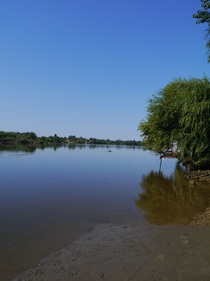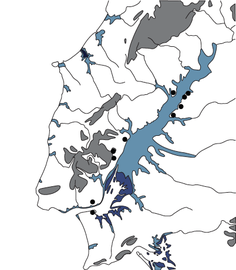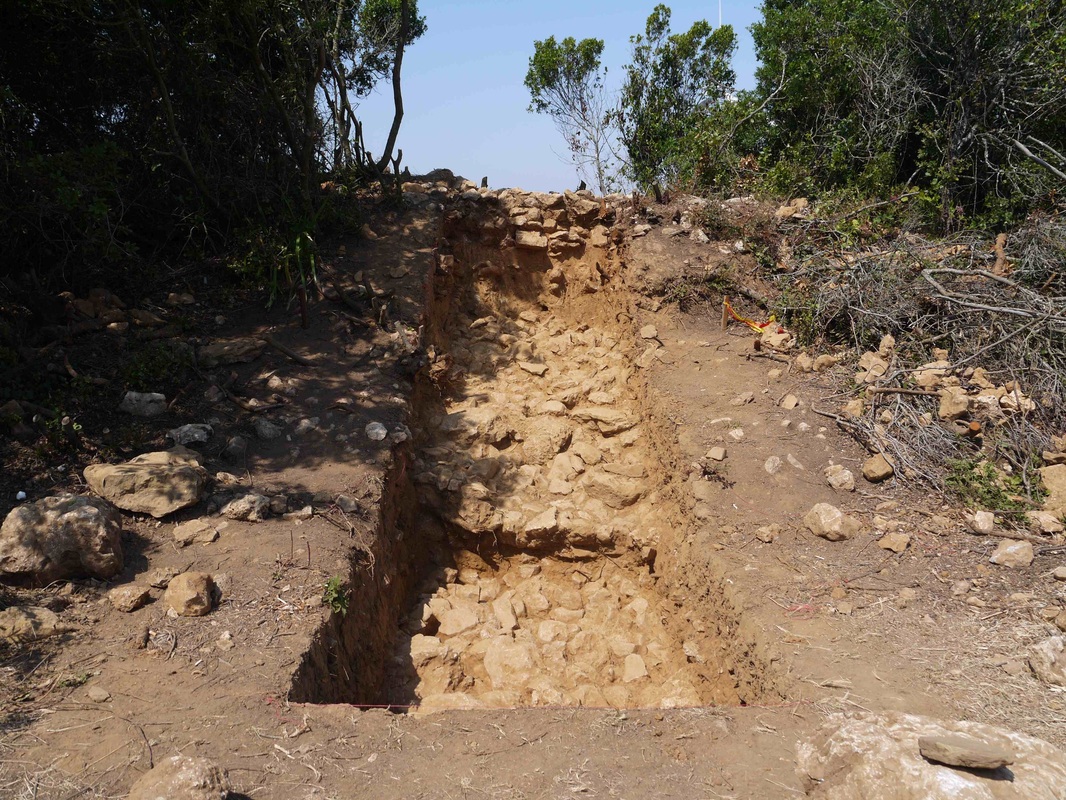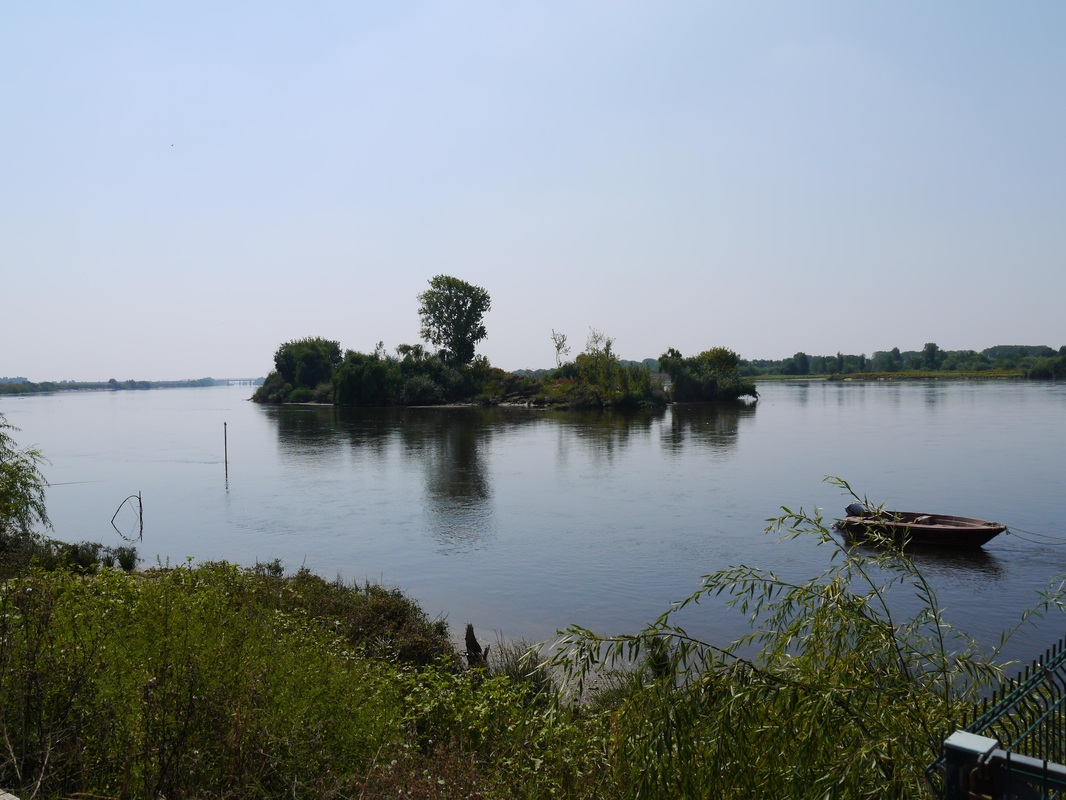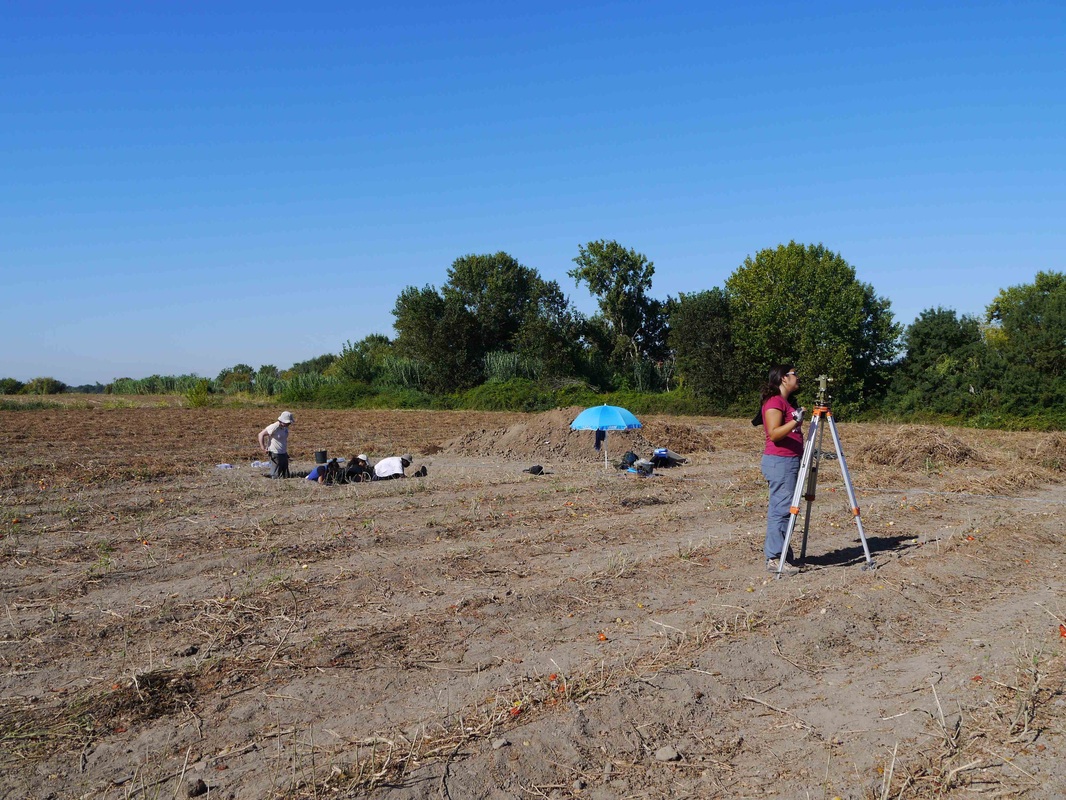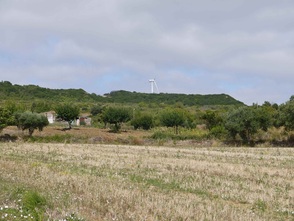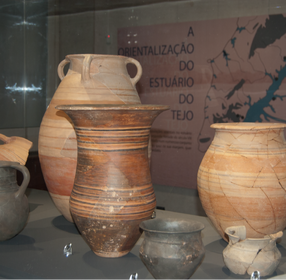|
Research Team: Ana Margarida Arruda Elisa de Sousa Cleia Detry João Pimenta Henrique Mendes Rui Soares Participating Institutions:
FCT UNIARQ Supporting Institutions:
Alenquer Town Council Alpiarça Town Council Salvaterra de Magos Town Council Vila Franca de Xira Town Council |
|
This project’s core objective has been to analyse the rationale behind the installation of human groups of Eastern Mediterranean cultural matrix in this region, focusing on the occupation of the ancient Tagus estuary by Eastern and/or Orientalizing communities. This area’s study has turned out particularly important in the context of the Western Phoenician expansion. It also highlights the technological, social, political and cultural changes that occurred in the beginning of the 1st Millennium BCE in the Far-Western regions of the Mediterranean, which are relatively well documented in material culture, architecture, building techniques and animals consumed. Transition from the Bronze Age to the Iron Age clearly illustrates the change occurred in vast regions of Iberia, in what concerns these last aspects. Such change was clearly caused by the arrival of massive groups of people from other regions.
Until recently the presence and installation of exogenous human groups had been documented only at the mouth of the Tagus, more precisely at Lisbon and Almaraz (Almada) and further North, at medieval Alcáçova of Santarém. But recent prospection works done along the banks of the Tagus has revealed an exceptional concentration of settlements clearly related with the Western Phoenician world. This phenomenon needed to be understood and explained, as such network of settlements has no parallel, except in the Coast of Malaga. It consisted of the following settlements: Santa Sofia, Quinta da Marquesa II, Casal da Mó, Quinta da Carapinha and Casal do Pego (municipality of Vila Franca de Xira); Castro do Amaral (Alenquer); Porto do Sabugueiro (Salvaterra de Magos); Alto dos Cacos and Eira da Alorna (Almeirim); Alto do Castelo and Cabeço da Bruxa (Alpiarça). On the other hand, some of the these sites were occupied since the Late Bronze Age, as was the case of Castro do Amaral and Alto do Castelo. We therefore absolutely needed to understand the interaction between the two communities, indigenous and exogenous, and the exact result of such interaction. This newly-emerged situation enabled us to reassess the possibilities considered for explaining the colonization by the Phoenicians of today’s Portuguese territory. This therefore required a more in-depth research of such reality, targeting archaeological collections, architectural structures, consumed animals and occupied areas. We decided that each identified site had to be studied in detail, if we wanted to properly address the multiple issues raised by the new situation. The occupied area of each identified site, their chronological sequence and specific functionalities were the questions that we wanted to answer in order to understand the settlement density that has been detected in this geographical area. The relations among the sites, most of which installed at low elevations, or in sloping areas, in most cases without natural conditions of defence (as the previously known sites of the castle slope, in Lisbon, Santarém and Almaraz-Almada), must also be assessed to understand the situation from the point of view of the colonists themselves. Considering that the indigenous populations certainly played a more active role than that of mere passive observers of their own history, it seems relevant to clarify if there were any mixed settlements, different from the solely indigenous ones, and from those that can be classified as factories or colonies. Archaeological works were done in 2013 and 2014 at Cabeço da Bruxa, Porto do Sabugueiro and Castro do Amaral. Old documents were also studied, as well as materials from 20th century excavations preserved at the National Museum of Archaeology, the Casa dos Patudos and the Municipal Museums of Almeirim and Alenquer. Prospection and excavation works were carried out in 2015 at Chões de Alpompé. Systematic prospection works, considered a priority, were also continued. According to the data from prospection works already done, not all the small sites identified up to this date on both banks of the old Tagus estuary remained occupied at the later stages of the Iron Age, unlike the large settlements of the Tagus mouth (Lisbon and Almaraz) and the one installed at the plateau of the Santarém Alcáçova. The artefacts collected at the surface, however, show that other settlements remained active. We were able to understand such situation and glimpse the way in which the exploitation of resources of the communities settled in the region developed, after the re-organization of Mediterranean economy following the so-called “crisis” of the sixth century BCE. Publications: Arruda, A. M. (2017) - A Idade do Ferro Orientalizante no Estuário do Tejo: as duas margens do mesmo rio. In Sebastian Celestino e Esther Rodriguez Território comparados: los valles del Guadalquivir, el Guadiana y el Tajo em época tartésica (Anejos del ArchEspArq, LXXX). Madrid: CSIC, 283-294. Arruda, A. M.; Sousa, E.; Pimenta, J.; Mendes, H.; Soares, R. (2014) - Alto do Castelo´s Iron Age occupation (Alpiarça, Portugal). Zephyrus, 74, p. 143-155. Arruda, A. M.; Sousa, E. (2015) – Late Bronze Age in Alcáçova de Santarém (Portugal). Trabajos de Prehistoria, 72, nº 1, p. 176-187. Arruda, A. M.; Pereira, C.; Pimenta, J.; Sousa, E.; Mendes, H.; Soares, R. (2016) – As contas de vidro do Porto do Sabugueiro (Muge, Salvaterra de Magos, Portugal). CuPAUM, 42, p. 79-101. Arruda, A. M.; Sousa, E.; Pimenta, J.; Soares, R.; Mendes, H. (2017) – Phénicians et indigènes e contact à l’embouchure du Taje, Portugal. Folia Phoenicia, 1, 243-251. Arruda, A. M.; Sousa, E.; Pimenta, J.; Soares, R.; Mendes, H. (2017) – Fenícios e indígenas em contacto na foz do Tejo. Ophiussa, 1, 79-90. Arruda, A. M.; Sousa, E.; Barradas, E.; Batata, C.; Detry, C.; Soares, R. (2017) – O Cabeço Guião (Cartaxo, Portugal). Um sítio da Idade do Ferro do vale do Tejo. In Sebastian Celestino e Esther Rodriguez Território comparados: los valles del Guadalquivir, el Guadiana y el Tajo em época tartésica (Anejos del ArchEspArq, LXXX). Madrid: CSIC, 319-361. imenta, J. P.; Mendes, H.; Arruda, A. M.; Sousa, E.; Soares, R. (2014) - Do pré-romano ao Império: a ocupação humana do Porto de Sabugueiro (Muge, Salvaterra de Magos). Magos, 1, p. 39-57. Pimenta, J.; Arruda, A.M. (2015) [2014] – Novos dados para o estudo dos Chões de Alpompé. Estudos Arqueológicos de Oeiras, 21, p. 375-392. Pimenta, J.; Sousa, E.; Amaro, C. (2015) - Sobre as mais antigas ocupações da Casa dos Bicos – Lisboa: da Olisipo pré-romana aos primeiros contactos com o mundo itálico. Revista Portuguesa de Arqueologia, Lisboa. 18, p. 161-180. Pimenta, J.; Sousa, E.; Henriques, E.; Mendes, H.; Arruda, A. M. (2018) - A Eira da Alorna (Almeirim): as ocupações pré e proto-históricas. Cira, 6. Sousa, E. (2017) - Percorrendo o Baixo Tejo: regionalização e identidades culturais na 2 metade do 1º milénio a.C. In Sebastian Celestino e Esther Rodriguez Território comparados: los valles del Guadalquivir, el Guadiana y el Tajo em época tartésica (Anejos del ArchEspArq, LXXX). Madrid: CSIC, Sousa, E. (2015) – Alcune considerazioni sulla Età del Ferro nella costa atlantica occidentale. Rivista di Studi Fenici. Roma. 43, p. 145-160. Sousa, E. (2016) – From Greek to Roman Pottery in the Far West. In Japp, S. e Kögler, P. (eds.), Traditions and Innovations. Tracking the Development of Pottery from the Late Classical to the Early Imperial Periods. Viena: Phoibos Verlag, p. 17-28. ISBN: 978-3-85161-160-1 Sousa, E.; Pimenta, J.; Mendes, H.; Arruda, A. M. (2017) – A ocupação proto-histórica do Alto dos Cacos. Cira, 5, 9-32. Sousa, E; Arruda, A. M. (2018) - A Idade do Ferro na Alcáçova de Santarém. Onoba, 6, 3-19. |
last updated: May 2019

